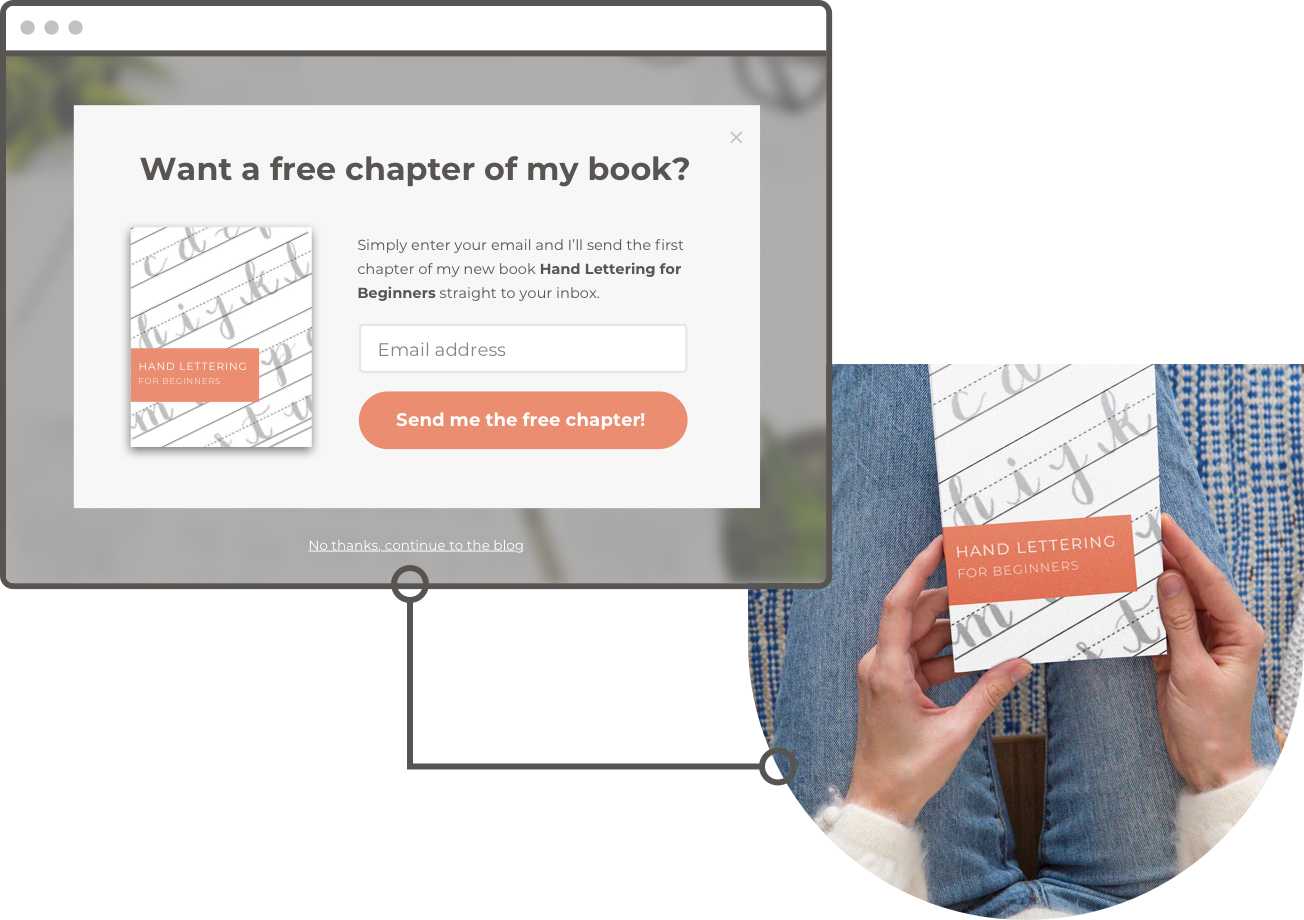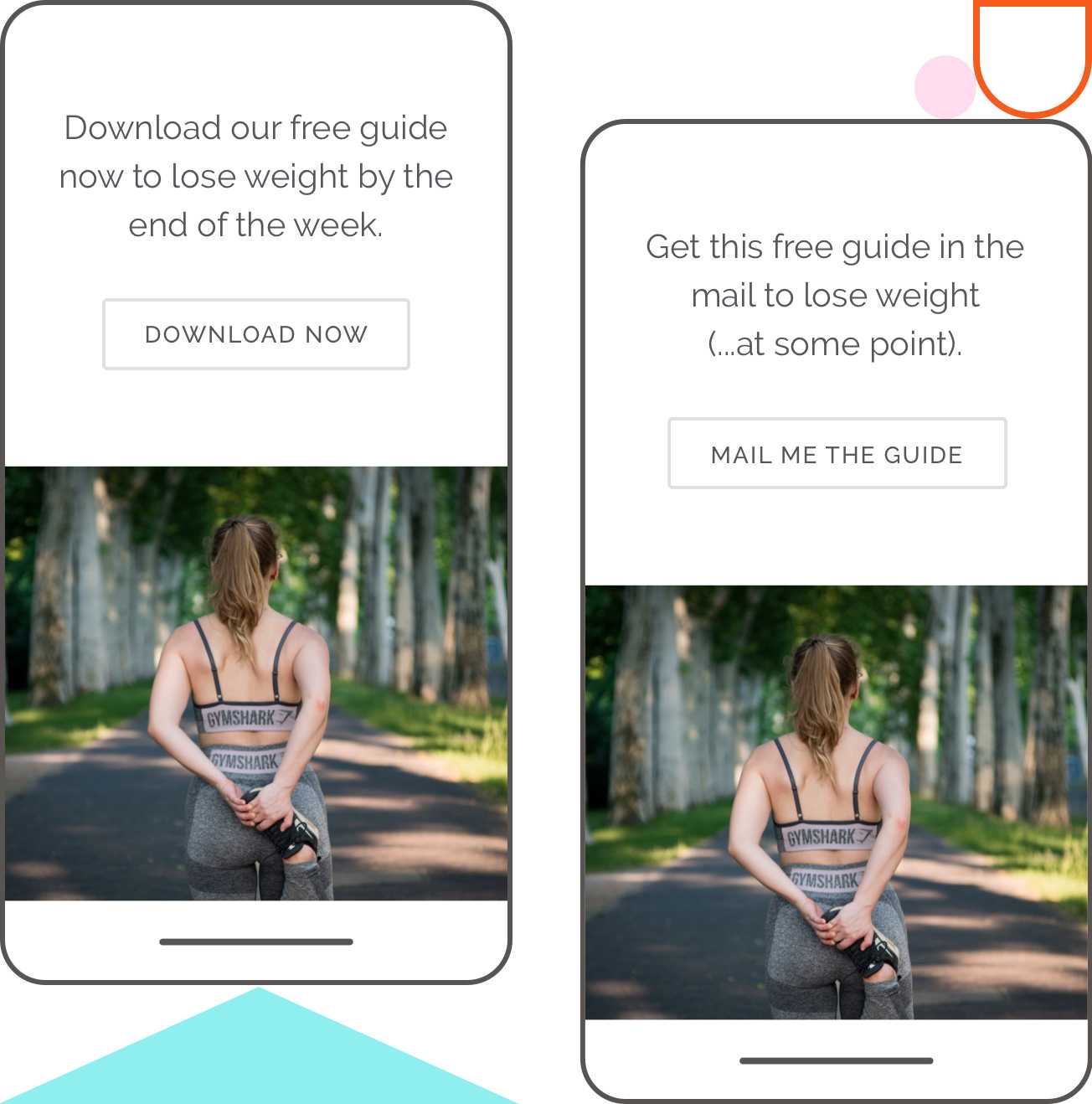How to Design Lead Generation Strategies that Actually Work
Lead generation is how you turn anonymous web traffic into business-building potential. Failure to capture a visitor’s information means you’re letting potential customers (and revenue) slip through the cracks.
That’s where lead generation steps in. Lead generation is the process of capturing a visitor's contact info so that you can proactively follow-up and market to them in the future. Oh, and so you can eventually make a sale.
But how you generate leads is critical to success. Like any other marketing campaign, if you’re not proactively strategizing each step of the process, you probably won’t see the results you want.
This chapter is about the strategy of lead generation. How do you attract, qualify, and capture leads?
1. Target a specific audience
Define your ideal customer and your ideal lead for this specific campaign.
Your business doesn’t cater to everyone, so your lead magnets shouldn’t be “one-size-fits-all” either. Targeted lead generation ensures you know who your audience is, what they want, and what kinds of lead magnets will get them to convert.
This kind of targeting helps ensure you attract the right audience at the right time, so they’ll be more likely to buy.
Is my audience the same as my customer persona?
The audience is likely similar to what your brand’s customer persona is. However, each lead magnet might have a more specific audience.
For example, your pet store company has one lead magnet targeted at dog owners and another lead magnet for cat owners. You might even break it down further with one lead magnet for “big” dog owners and another for “small” dog owners.
You want your lead magnet to attract potential customers, so there should be a lot of overlap between your customer persona and your lead generation persona. But you might delve deeper into a specific customer target for each lead gen campaign.
How do I run targeted lead generation?
Defining the psychographics and demographics about your ideal leads is only half the battle. Now, you have to find those potential leads and get them to convert!
Here are some lead generation techniques to help you target your ideal leads:
- Advertise on platforms where you already find and interact with your current customers, like social media or specific groups. Go where your ideal customer is hanging out, and you’ll attract quality prospects right from the get-go.
- Segment and personalize your content. Both your lead magnet and marketing content should be designed with your ideal customer in mind.
- Match the lead magnet to the interest level of your audience. A new, “cold” audience will want bite-size content, like a checklist or infographic. A “warm” audience that has already shown interest in you will want more involvement, like a webinar or ebook.
2. Figure out where your audience is coming from
Determine primary traffic sources for qualified incoming prospects.
While you’re thinking about your visitors, consider traffic sources as well. Where are your site visitors coming from? What does this mean about the kinds of traffic and leads you’re attracting?
This is referred to as qualified lead generation. You’re “qualifying” the leads that you’re getting by attracting the traffic that would be most likely to buy from you.
Let’s use the above example. You don’t just want people who like dogs but don’t own one. You want to target dog owners who are actually buying food and toys for their pets.
Want more traffic? Try out these traffic sources and ideas to figure out where your audience is hanging out.
3. Create a rockstar lead magnet
Outline how you’ll deliver value that your lead cares about.
You know who your ideal audience is for this specific lead generation campaign. Now you want to figure out the kind of lead magnet that they’d want.

Lead Magnet
An incentive, usually a free piece of content, that a business offers in exchange for a prospect’s email address or contact info.
Always provide value in exchange for their information.
The best way to add value is to solve your customer’s pain point. If you can solve their pain points, you’ll establish credibility and expertise while kickstarting a lasting relationship.
So ask yourself: what’s driving your customer? What problems do they need to fix or solve the most right now? How can you provide a new and unique solution with your lead magnet?
Once you’re clear on your customer’s problem and how you’ll provide a solution, you can package a lead magnet that seamlessly delivers that value.
For example, your ideal audience may love yoga, but they don’t have enough time to practice during the week. Your lead magnet could be a series of videos with short 7-minute yoga meditations for the “busy yogi.” You’re delivering short and snappy value that they actually care about. Now that’s worth an email address, don’t you agree?
Brainstorm a list of topics that:
- Your customer cares about (relevant value)
- That hasn’t been done before (uniqueness)
- And that you’re an expert in (expertise)
4. Make sure the lead magnet fits their needs
Double-check the logistics of the lead magnet.
You’ve got the audience and the topic. Now how do you turn that information into a resource you can offer? What kind of lead magnet will best suit this audience and the content you’re looking to provide?
Consider the best way to deliver the information in a way that will best speak to your audience. Do they want a checklist or a video series? Do they want a printable guide or something they can download on their phone?
Also, consider if you can actually create this awesome lead magnet with the resources you currently have. If you don’t have access to video creation, you don’t want to create a lead magnet that’s a below-average video. Play up your strengths.
See some tried-and-true lead magnet examples here to help with your brainstorming.
5. Make the lead magnet enticing
Make a promise for fast, effective results.
People enjoy instant gratification. The faster someone sees results from your lead magnet, the faster they trust your business.
The most enticing lead magnets promise (and deliver on) instant effects.
One of the most important lead generation techniques to remember is that your visitors want the lead magnet now, and they want the results that come from that content even faster. This means you’ll want to make the magnet downloadable in an instant, and you also want the value itself to provide a quick win.
For example: “Download this free guide right now to lose 5 lbs by the end of the week.”
As opposed to: “Get this free guide in the mail to lose weight (...at some point).”

Which magnet gets your email address?
(Be sure you can actually deliver on your promises, though.)
If you believe in the power of your lead magnet, include a guarantee. Guarantees tell the lead that not only is it a low barrier to entry (just their email address), but it’s also risk-free with only upsides.
6. Be generous with opt-in opportunities
Figure out where lead magnets belong.
The more (quality) opportunities you provide for people to opt into your email list, the more your list will grow. You might want one lead magnet on your website homepage and blog that encourages customers to subscribe to your newsletter. You could have another generation process on a landing page, where you encourage them to input their email to reserve a spot in the webinar.
Every interaction with a new visitor should include an opportunity for that visitor to transform into a lead. This could be on your website, landing page, or social media. You want to specify where traffic is landing, and what they see when they land there.
Remember that you should only have one CTA or lead magnet per page to minimize distraction and confusion.
7. Design the page to optimize lead generation
Start playing around with design.
The design of your page matters a lot. It will either intrigue your audience and push them towards conversion… or it will make them click away.
The outfit you wear tells people who you are. Are you in a bright, goofy shirt to make people laugh? Are you in a high-quality designer suit as a status symbol?
In the same way, the design of your lead pages and advertisements will attract and engage a specific type of lead. Bright colors and authentic images are more likely to grab attention in a fun way (like for a pet owner), while a dark and sleek might interest a luxury customer.
Design your website and lead generation landing pages as a reflection of your brand. This helps you attract and capture the right leads that want to partake in the lifestyle you’re portraying.
What do you need to outline? Check out these essential landing page elements that will help you create your lead generation strategies and marketing campaigns.
8. Test
Create a list of features on the landing page you’d like to test.
You won’t know if your lead generation methods and strategies work until you test them, see the data, and get feedback. Tests ensure you’re engaging your audience, building a relationship, and pushing conversion.
Don’t get attached to the first landing page you make. Your landing page will (and should) change a lot after each test.
Learn how to run A/B testing for your landing pages here. It’s super easy with Leadpages. Our Pro and Advanced customers can click on “create new split test,” choose a control page, change one variable, and start collecting data. Then, you keep the ‘winner’ of the test and go on to test other features.
9. Define how you’ll nurture leads
Figure out the next step after lead generation.
Once you have your leads, what are you going to do with them? How are you going to reach out to them to further pull them through to the next level of your sales journey?
Most businesses want to nurture their leads through email marketing. That means that when you collect your leads’ information, you’ll want to ask for their email address. Check out these 19 nurturing email marketing examples for some good ideas to get you started.
If your lead magnet is a free consultation, you might want to collect their phone number so you can call them for the consult (and then nurture them while on the phone call).
Know how you’ll nurture leads after you have them, so you can know how you’ll need to capture them.
Start with lead generation techniques
A well-defined strategy will transform ‘strangers’ into warm leads, build your prospective customer list, and ramp up your marketing ROI. Once you’ve captured the lead, you can pull them down a targeted marketing campaign that will start rolling in the dough for your business.
You’ve got your strategy. Now let’s get your landing page up and running. Check out the next chapter to learn what a lead generation landing page is and how you can use it.